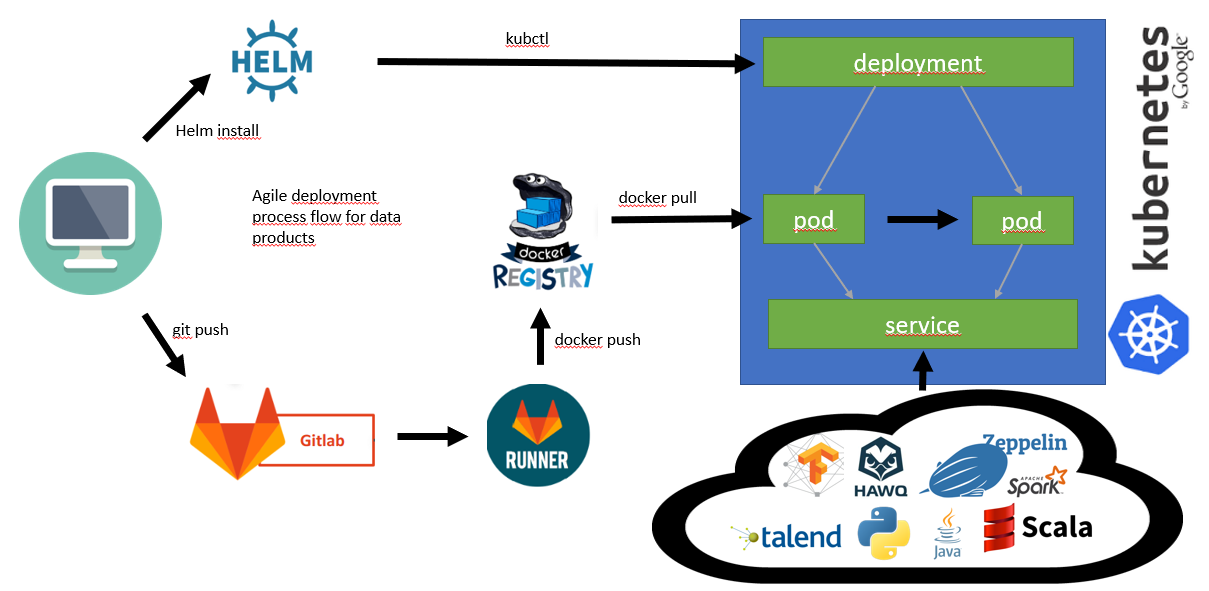Analytics Platform
Having built a Data Lake for your company’s analytical needs, there soon will arise new use cases, that cannot be easily covered with the Data Lake architecture I covered in previous posts, like Apache HAWQ™: Building an easily accessable Data Lake. You will need to adapt or enhance your architecture to become more flexible. One way to make this flexibility happens, is to transform your Data Lake into an Analytics Platform.
Definition of an Analytics Platform
An Analytics Platform is a platform that provides all kind of services needed for building data products. This often exceeds the functionality of a pure RDBMS or even a Data Lake based on Apache HAWQ™. There are data products that have more requirements than a SQL inferface. Reporting and basic analysis are addressed by this setup, but products dealing with predictions or recommendations often have different needs. An Analytics Platform provides flexibility in the tools used. There can be, for example, a Apache HAWQ™ setup and at the same time an environment for running Tensorflow applications.
Using existing parts: Multi-colored YARN
When you are running a Hadoop Cluster™, you are already familiar with a resource manager. This manager is YARN. With YARN you can already deploy Linux Containers, and support for Docker containers has already progressed pretty far (YARN-3611). Building complex applications and managing them with YARN is called Multi-colored YARN by Hortonworks.
Following through on this idea you will have a cluster with just some central services installed directly on bare metal. You will deploy the rest in containers, as shown in the images below.

The example makes use of Kubernetes and Docker for virtualization and provides the following services on bare meta, since they are needed by most applications:
- Ambari
- Kuberneted
- YARN
- ZooKeeper
- HDFS
Especially the HDFS is important as a central services. This makes it possible for all applications to access the some data. The Picture above shows, that there can be several instances of a Hadoop distribution. This is possible even in different version. So the platform allows for multi tenancy, while all instances are still processing the same data.
Development changes
Having an Analytics Platform makes the development of data products easier. There always was the problem of developing a product on a sample of the data, when you used development and staging systems, as decribed by me here. In same cases these did not contain all possibly combinations of data. This could result in error after a deployemnt on the production environment. Even going through all development and staging could not change this. This new approach allows you to deploy all three systems on the same data. So there you can account for all data induced errors on the development and staging systems already.
You can even become more agile in your development process. The picture below shows an example deployment process, that uses this system.
Conclussion
Moving from a pure Data Lake to an Analytics Platform give you are flexibility and helps in the development of data products. Especially since you can develop on the same data as is available on production. Of course it brings more complexity to an already complex environment. But since it is possible to keep YARN as resource manager and move to a more agile way of development and deployment, it might be worth considering. Once Multi-Colored YARN is finished, it will be easier to make this happen.

Leave a Reply